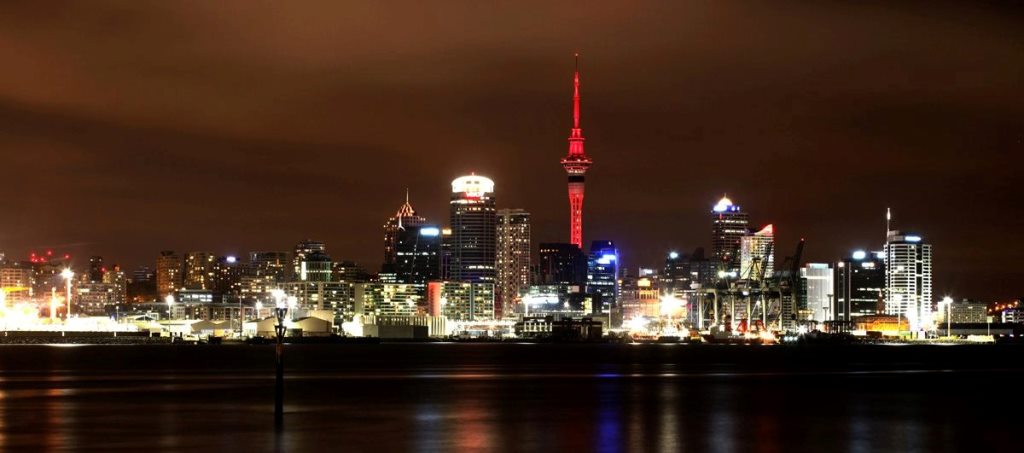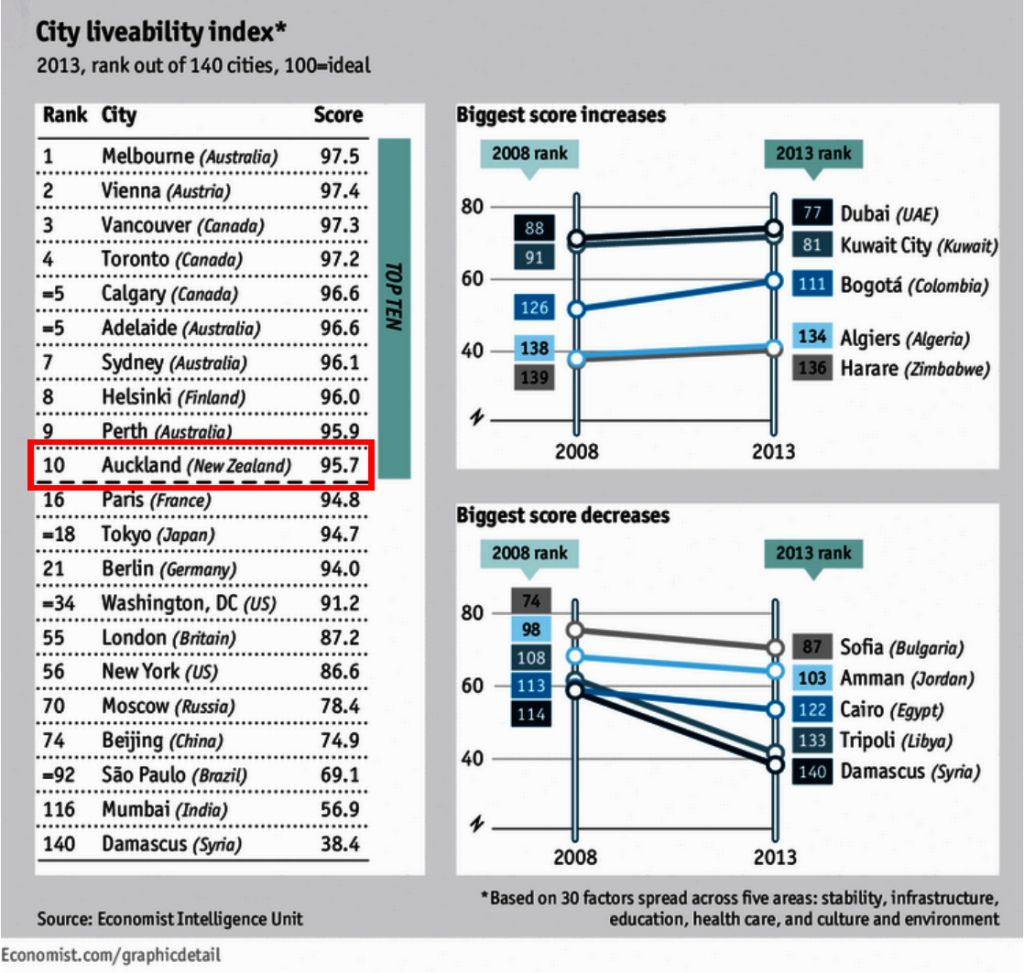
The Economist Magazine and Economist Intelligence Unit complete a number of studies each year, one of which is the City Liveability Index shown in the chart above.
Auckland, New Zealand is scored as the 10th highest in the world, which must be good news for Auckland Council who has the vision of working towards being the worlds most liveable city.
The Economist article outlines the liveability scores are calculated from 30 factors that are grouped into 5 areas – stability, infrastructure, education, healthcare, and culture and environment.
The Economist article notes – a glance at the top ten shows that the cities that do best are mid-sized conurbations in countries with low population densities because such conditions will often result in low crime, working infrastructure and lots of recreational activities.
Working infrastructure is a highly important component of the perceived liveability of a city.
In the case of Auckland (or any city for that matter), local problems are well known, documented and debated.
The role good infrastructure management plays is taking these known problems, and the pressures of city growth, and developing credible plans for the creation, renewal, maintenance, and operations of infrastructure to meet the needs of the community.
Auckland is well-advanced in infrastructure management planning and continues to refine plans, and develop alternative scenarios for discussion and debate.
Given the projected growth in the population of Auckland over the next few decades, significant additional investment in infrastructure is projected.
Well done Melbourne for having been rated the worlds most liveable city. And well done Australia and New Zealand for having five of the ten world’s most liveable cities.
Good asset management and continued investment in infrastructure contribute to these pleasing rankings.
Auckland City by Karl Hipolito





